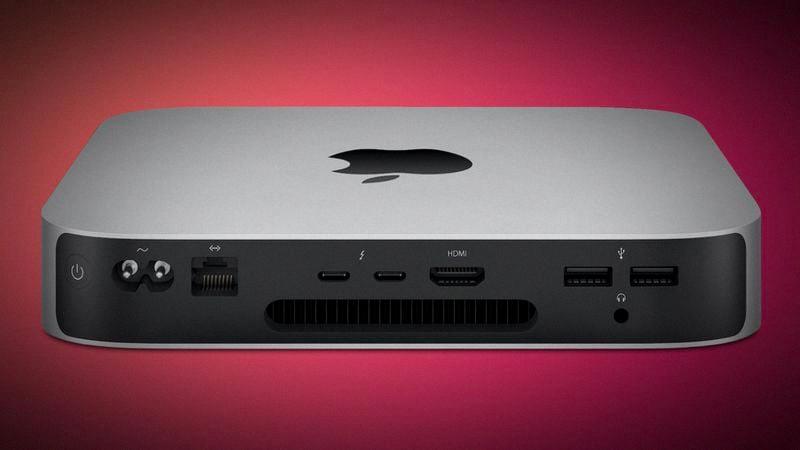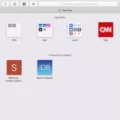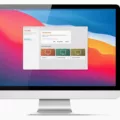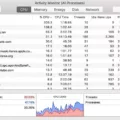Are you a Mac user? Knowing how to manage the space on your computer is a useful skill, and it’s easy to do. In this blog post, we’ll walk you through the steps of how to check disk space on Mac.
First, click on the Apple icon in the top left corner of your screen. Then select About This Mac from the drop-down menu. This will open up a window with informaton about your computer.
Next, click on the Storage tab at the top of this window. This will show you the total amount of disk space available, as well as how much space you’re using. You can also see what types of files are taking up most of your disk space.
If you want to get more specific information about what’s taking up your disk space, click on Manage in the bottom right corner of this window. This will open a new window showing all of your files and folders and how much space each one is taking up.
If you want to free up some disk space, click on any file or folder that has a large amount of storage space allocated and select Move to Trash from the drop-down menu. Be careful when doing this though – make sure that whatever file or folder that you delete isn’t something important!

It’s also important to keep an eye out for updates for any apps or programs that you have installed on your computer – these can take up quite a bit of disk space over time if they aren’t updated regularly!
These are just some tips for how to check disk space on Mac – if you have any questions about managing storage on your Mac, feel free to get in touch with us here at [company name]. We’re alwas happy to help!
Checking Free Disk Space on a Mac
You can check the amount of free disk space on your Mac by opening the Apple menu, then selecting About This Mac. From the window that appears, click the Storage tab in the toolbar to view your available disk space. The Storage tab provides you with an overview of how much storage is being used and what types of files are taking up the most space. You can also access a more detailed breakdown using the Manage button.
Checking Disk Space Storage
To check your disk space storage on Windows 10, first select File Explorer from the taskbar. Then select This PC on the left. This will open a window with all of your drives listed. Under Devices and drives, you can see the avaiable space for each drive listed. This is your total disk space storage. If you need more details, you can right-click a drive and select Properties to see a breakdown of how much space is being used by different types of content, such as music, videos, documents, etc.
Checking Disk on Mac
To check your disk on Mac, start by opening Disk Utility in the Utilities folder in Applications. Once Disk Utility is open, select the disk you want to check. Then, click the Info button in the toolbar. This will show you some detailed information about your disk, such as its size, available space, file system type, and more. You can also use Disk Utility to verify and repair any errors on your disk. To do this, select the disk and then click the First Aid button in the toolbar.
Insufficient Disk Space on Mac: Causes and Solutions
Your Mac is lkely saying there isn’t enough disk space because there is not enough space available to store new data. This could be due to a variety of things, including:
1. You have too many large files stored on your hard drive.
2. You have insufficient RAM (Random Access Memory) which can caue your computer to use the hard drive for storage instead of RAM.
3. Unnecessary applications and programs that are taking up too much space on the hard drive.
4. Too many temporary files that can take up disk space for no good reason.
5. Your hard drive may be full or nearly full, leaving little to no room for new data.
If you thnk this might be the case, you can free up disk space by removing unnecessary programs and files, clearing out temporary files, and deleting old backups from your hard drive.
What Is Consuming Disk Space on My Mac?
The amount of space taken up on your Mac will depend on what type of data and files you have saved. The main categories that take up the most space are usualy Applications, Photos, Music, Movies & TV Shows, Backups and Other Files. Applications are the programs installed on your Mac, such as iWork or Microsoft Office. Photos includes any images and videos you’ve stored in the Photos app. Music includes any audio files you’ve saved, such as iTunes purchases or MP3s. Movies & TV Shows includes any video content you’ve purchased from iTunes or other sources. Backups includes Time Machine backups of your Mac that may have accumulated over time. And finally Other Files includes any miscellaneous files such as PDFs, documents or downloads that don’t fit into the other categories.
If you want to find out more about what is taking up space in each category, click on the Apple logo in the top left of your screen and choose “About This Mac”. Then click on the Storage tab to see a detailed breakdown of how much space each category is taking up.

Source: macrumors.com
Increasing Disk Space on a Mac
Getting more disk space on your Mac is easy with the right tools and techniques. First, you can use the built-in Optimize Storage feature to quickly free up space. This feature automatically identifies large files, downloads, and other items that can be safely removed. It also offers recommendations on how to make the most of your storage.
Next, you can remove any unused apps and all their leftovers by using a third-party app such as App Cleaner & Uninstaller. This will help you get rid of thse pesky leftover files that can take up a lot of disk space.
You can also find and remove duplicate files to free up even more space. A free tool like Duplicate File Finder Remover can help you identify and delete any duplicate files on your system.
Finally, make sure to empty the trash regularly as this will help clear out unnecessary items from your Mac. You shold also clear your browser cache regularly and delete any unused language files in order to maximize disk space. Additionally, try to clean up your Desktop by deleting or archiving any unnecessary items that may have accumulated there over time. Finally, delete mail attachments and junk mail in order to free up even more space on your hard drive.
Deleting Files on a Full Mac Disk
If your Mac’s disk is full, you can free up space by deleting files. To do this, choose Apple menu > About This Mac, click Storage, then click Manage. From there, you can click a category in the sidebar such as Applications, Music, TV, Messages or Books to view the individual files in each category. To delete an item, select the file and then click Delete. This will free up space on your disk and make room for new files.
The Difference Between Disk Space and Storage
No, disk space and storage are not the same. Disk space is a measure of how much data can be stored on a hard drive, while storage refers to the physical hard drive itself. A hard drive’s disk space is determined by its capacity, which is typically measured in gigabytes or terabytes. Storage can refer to any type of physical device used for storing digital data, such as external hard drives, USB flash drives, and cloud storage.
Understanding the Causes of High Memory Usage on Mac Computers
The amount of available memory (RAM) on your Mac can become full for a number of reasons, such as a lack of free space on the hard drive, too many applications running at once, or too much clutter in the system. If your Mac’s memory is full it may be a symptom of an underlying problem, such as an application with a memory leak or an application that is using an excessive amount of memory. To free up memory, start by closing any applications that you are not currenly using. Additionally, you can free up disk space by deleting unneeded files and programs, emptying the Trash and clearing out caches and temporary files. If your Mac’s RAM usage remains high even after taking these steps you may need to upgrade your RAM or consider uninstalling certain applications.
Consequences of a Full Disk
When your disk is full, the computer can no longer store any additional data. This can cause a number of problems, such as decreased performance, frequent freezes and crashes, and even data loss. As the amount of available space on your hard drive decreases, it becomes increasingly difficult for the computer to access existing data quickly. In some cases, the computer can no longer access certain files or programs at all due to insufficient space. To prevent these issues from occurring, it is important to regularly check your disk usage and delete unnecessary files or programs when needed.
Conclusion
Mac is a leading computer company that has a long history of providing powerful, reliable, and user-friendly products. From the original Macintosh in 1984 to the modern Mac lineup, Mac has remained at the forefront of technology, consistently offering cutting-edge solutions for creatives and professionals alike. With its sleek design, intuitive operating system, and wide range of applications, Macs are renowned for their ease of use while still packing powerful performance. Its commitment to accessibility and security make Macs ideal for anyone lookig for a reliable computing experience. Whether you’re a student or professional, Mac offers the perfect blend of power and convenience.








